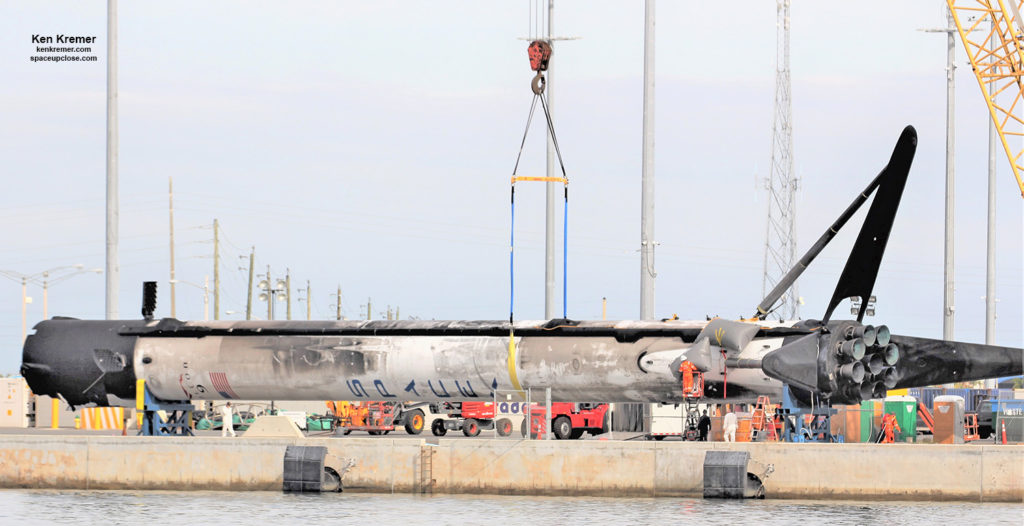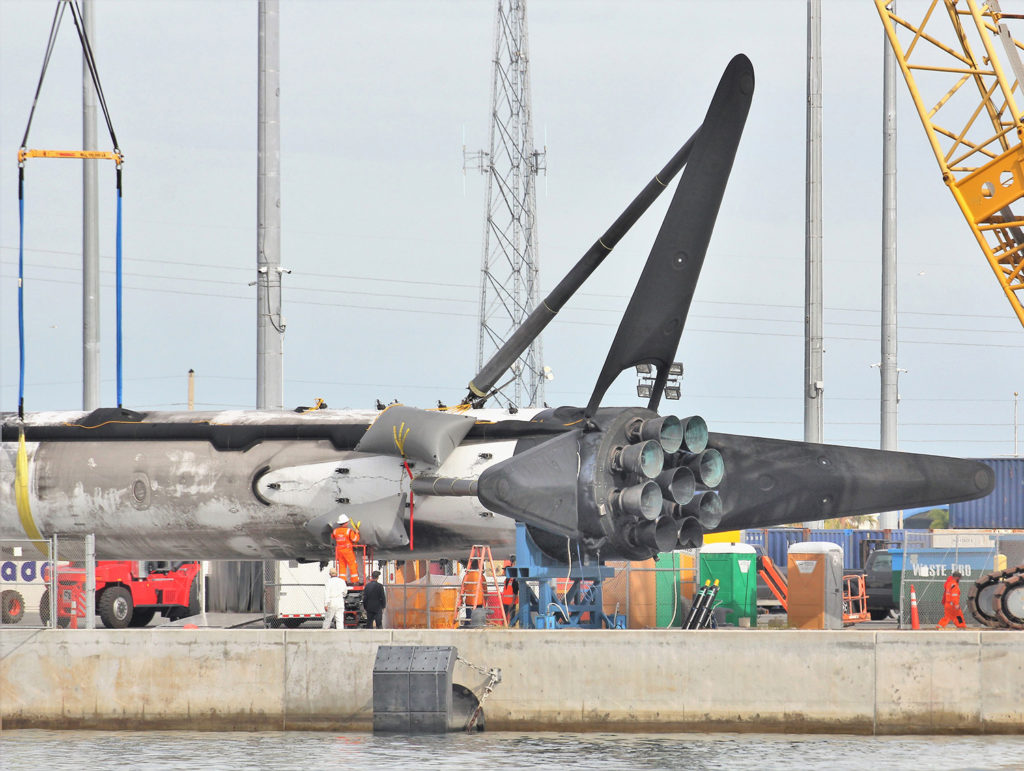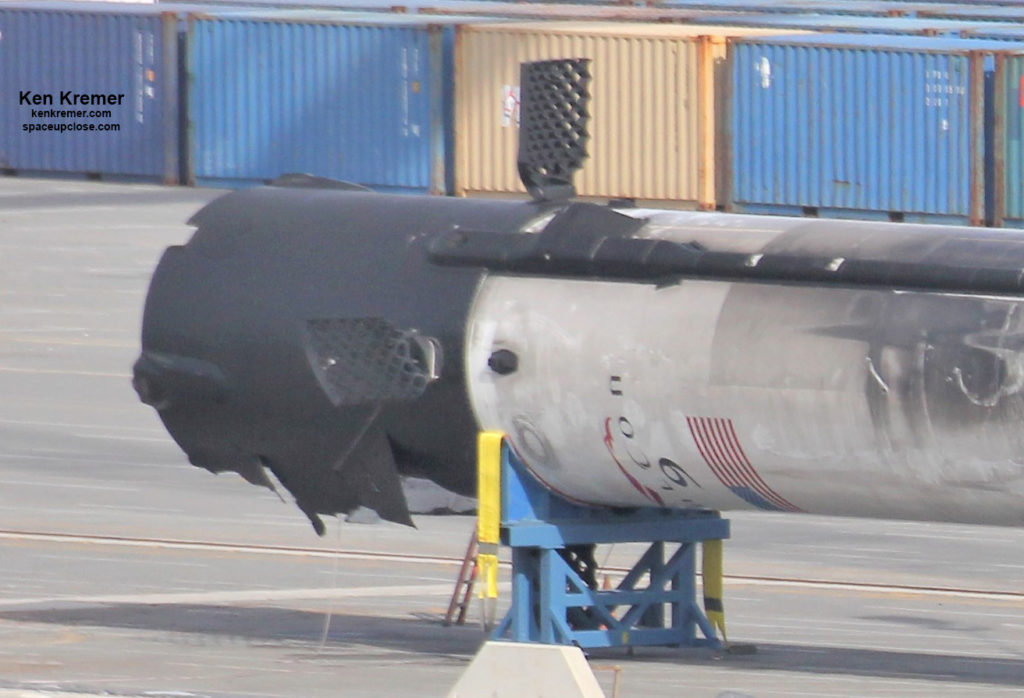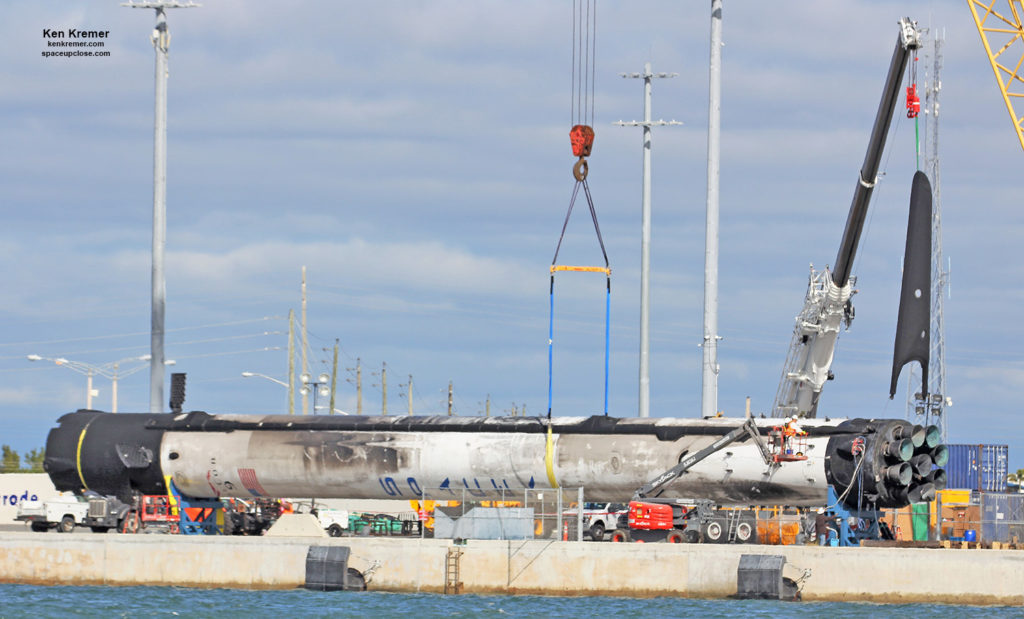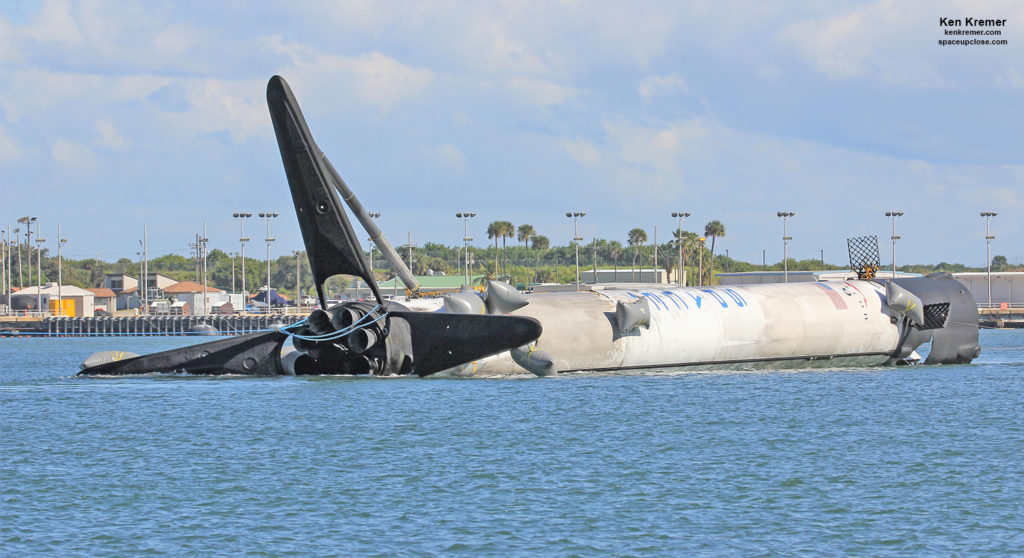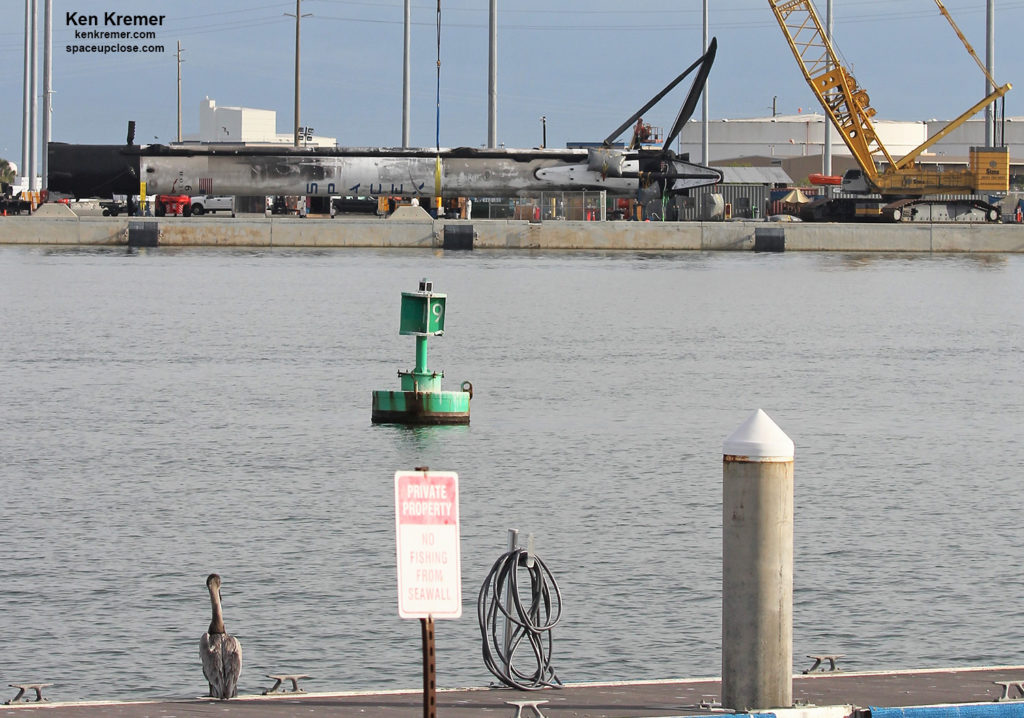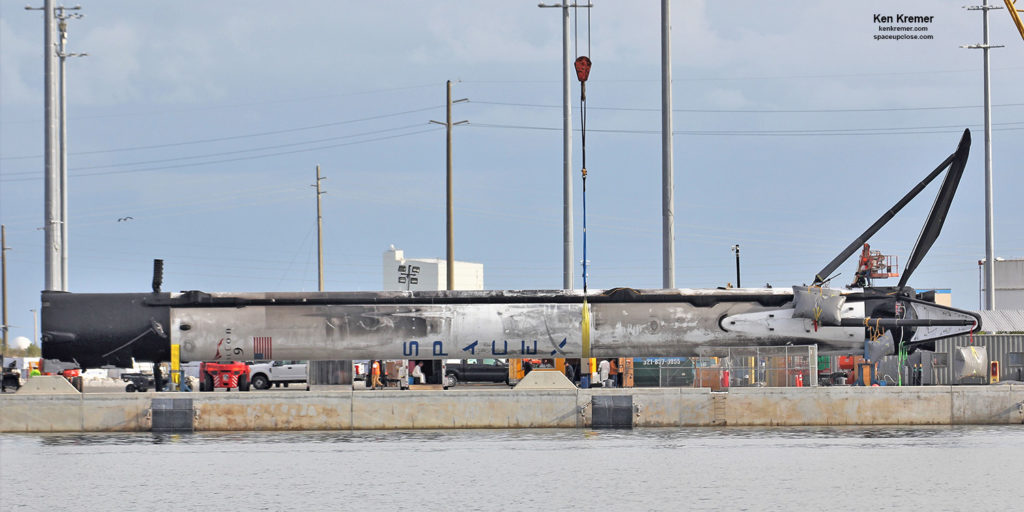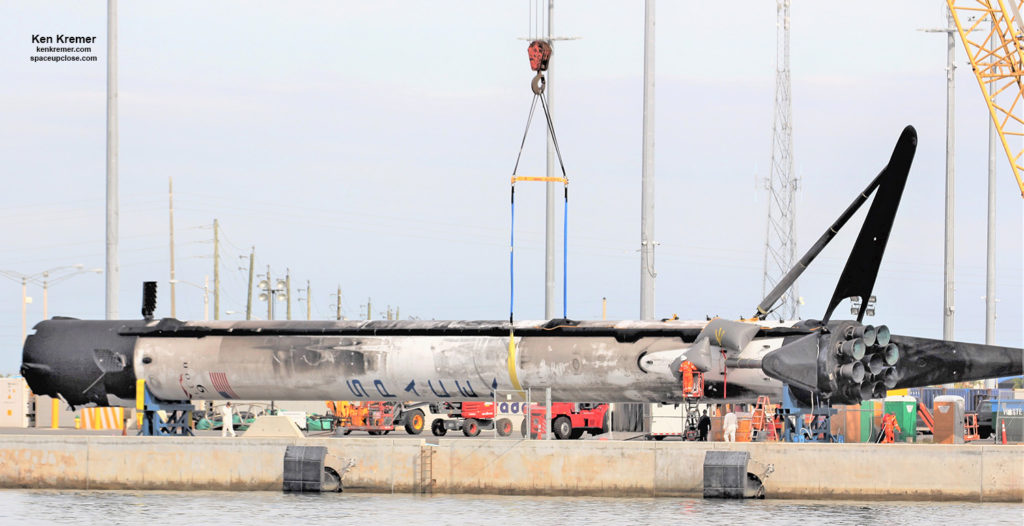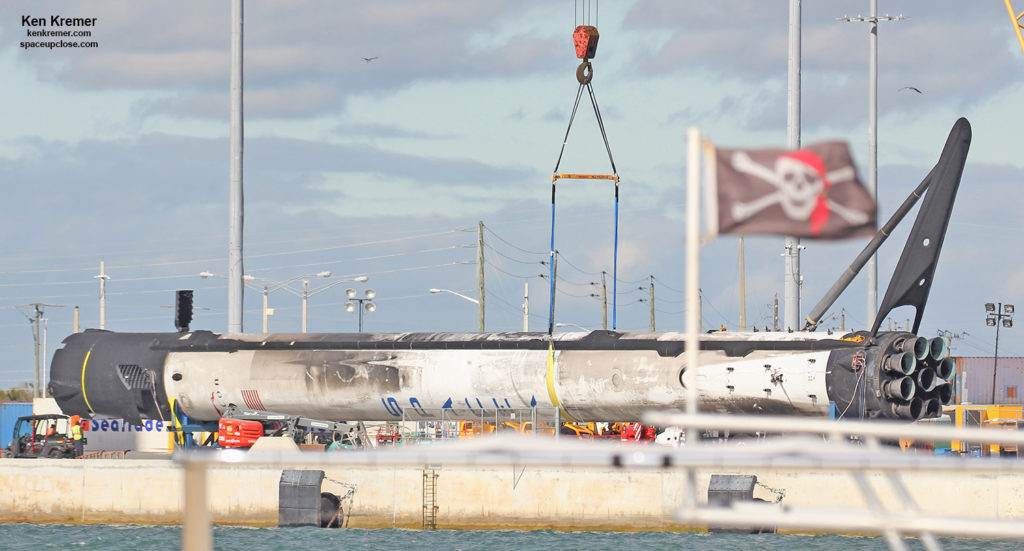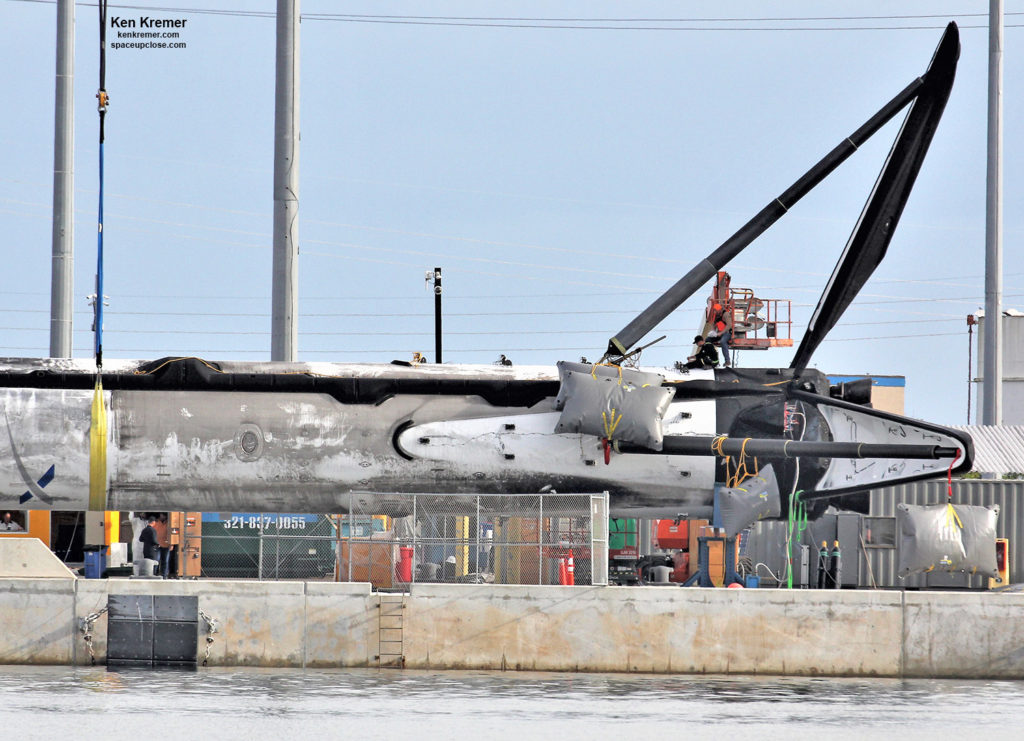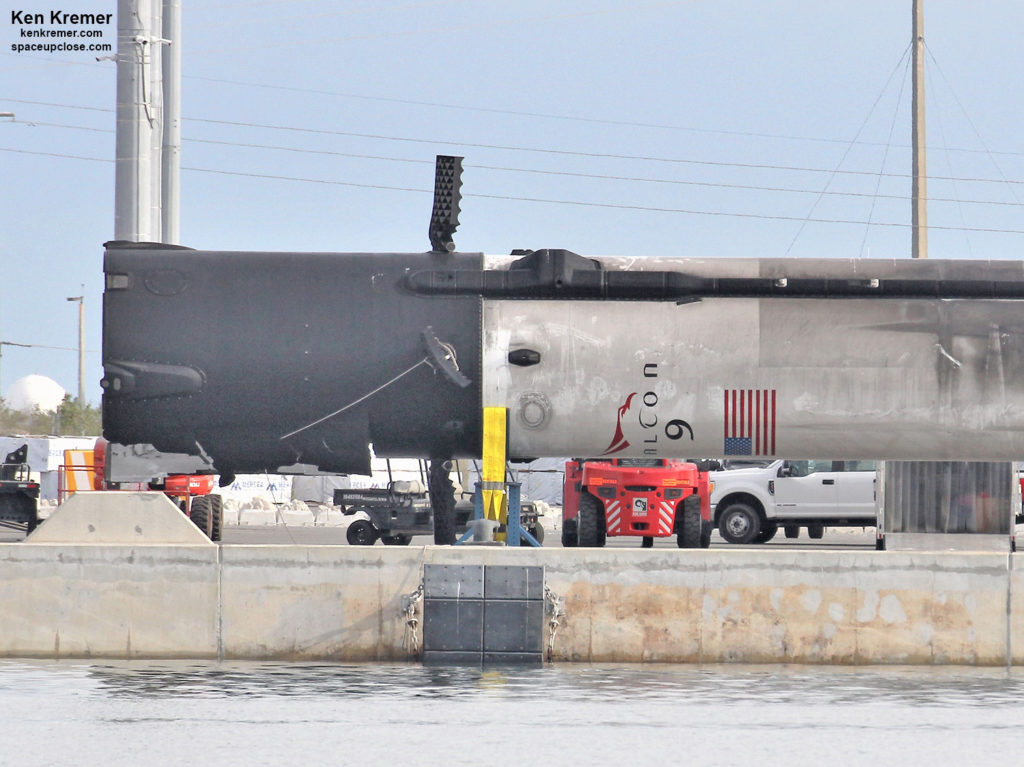RocketSTEM –13 December 2018
PORT CANAVERAL, FL –
The unprecedented sight of a Floating SpaceX Falcon 9 first stage being towed
into Port Canaveral after a hydraulic malfunction forced aborting the planned land
landing to a safe sea ditch landing, continued offering several days of unparalleled
spectacular viewing opportunities as the booster was hoisted from the sea waters
and processed to detach its appendages.
The horizontally floating
Falcon 9 first stage looked like a giant finned shark or alien sea creature with three of its four landing legs poking
out above the ocean’s surface as the SpaceX naval fleet towed it into Port
Canaveral by Jetty Park Pier just after 11 a.m. EST Friday, Dec. 7 and
continued on to the docking slip beside the parking spot normally utilized by SpaceX’s
OCISLY droneship.
crews attached 2 slings around the front and rear of the 15 story tall but
horizontally floating first stage. Then around 11 p.m. EST they hoisted the
booster out of the channel, allowed the waters to drain off and then placed it
onto a pair or cradles.
Then over the next few
days this week the technicians gradually removed the 3 remaining landing legs
and all four grid fins one by one.
Check out our expanding
gallery of Space UpClose eyewitness photos documenting the dissection, disassembly
and detachment of the trio of landing legs and quartet of grid fins.
And be sure to click on
our earlier galleries of the entire voyage from arrival at port, passing close
by the US Navy’s nuclear attack submarine the USS Indiana as well as traveling through
and docking at the port, and our Dec. 5 launch gallery of the Dragon cargo ship
for NASA.
Click back for more
imagery as the gallery grows.
began with the flawless blastoff of the new Falcon 9 rocket and Dragon CRS-16 commercial
cargo freighter right on time Wednesday afternoon December 5 as all nine first stage Merlin 1D engines roared to life and
ignited with 1.8 million pounds of liftoff thrust at 1:16 p.m. EST (1816 GMT) from Space Launch Complex 40 at Cape Canaveral Air Force
Station in Florida.
Port Canaveral at lunchtime Friday by the Eagle tugboat assisted by a small
fleet of SpaceX contracted ships.
of the channel onto work pedestals, crews from Logan Salvage and Diving removed
the flotation bags, cushions and rope lines installed at sea to keep the
booster safely afloat as the tugboats towed it to port.
booster survived with remarkable resilience. Except for the interstage at top
which was heavily damaged, cracked, broken, deformed significantly and missing
pieces.
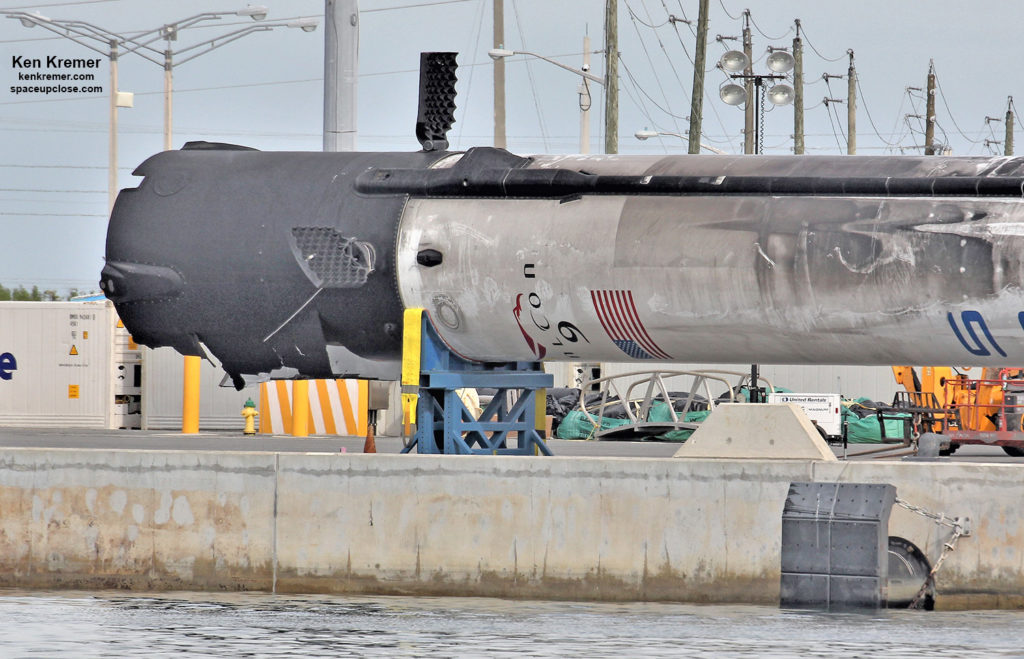 |
| Credit: Ken Kremer/kenkremer.com/spaceupclose.com |
document that all 9 Merlin 1D first stage engines survived intact, although the
bottom one was crumpled and severely damaged.
to have weathered the ocean trek with incredible fortitude.
Despite the fact that
it landed in the ocean and was subjected to corrosive sea water the landing legs were dissected in the normal
fashion albeit with the booster resting horizontally on the cradles instead of
standing vertically on the normal working pedestal.
the landing legs struts were detached first followed by the landing pads. The
cranes crews carefully and methodically unbolted each piece of hardware and
then craned it away to a storage area behind the booster.
 |
| Credit: Ken Kremer/kenkremer.com/spaceupclose.com |
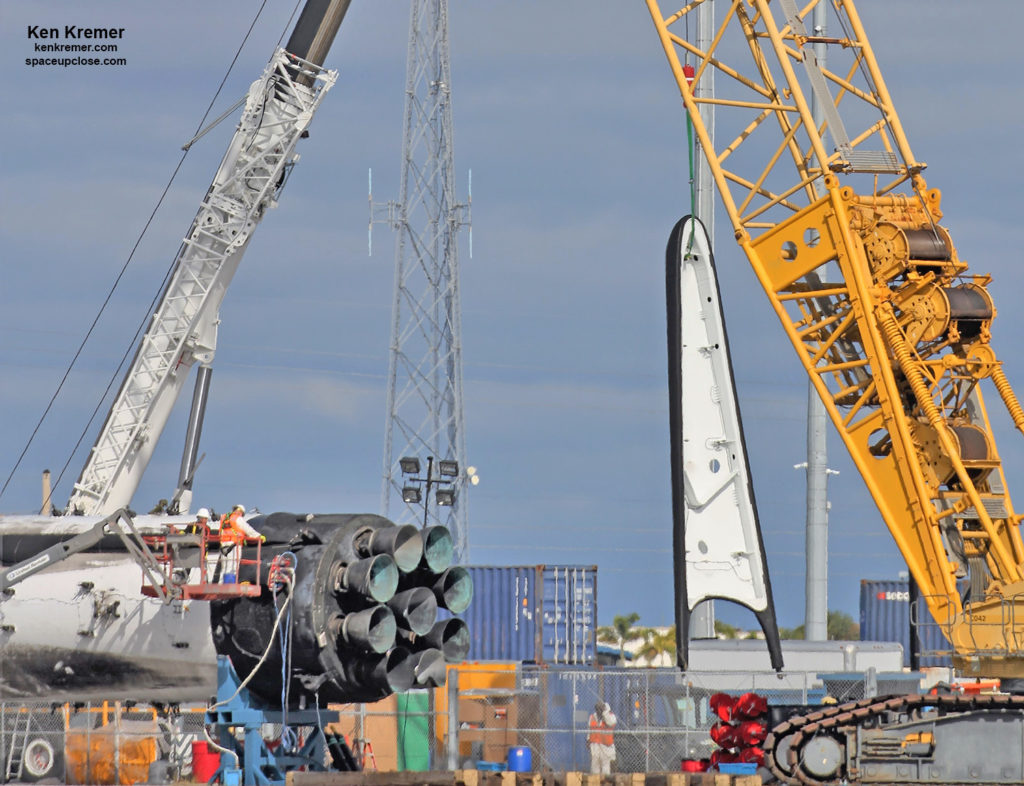 |
| Credit: Ken Kremer/kenkremer.com/spaceupclose.com |
In every prior instance,
the recovered first stage booster floats upright into Port Canaveral – clamped securely
atop the ‘Of Course I Still Love You’ or OCISLY droneship while being towed in
by the fleet of SpaceX leased ships.
out of science fiction floating Falcon event made for an absolutely otherworldly
and absolutely first of its kind sight on Friday, Dec. 7 – attracting the rapt
attention of space media like myself and colleagues and folks who just happened
to be in the right place at the right time.
was missing. It either snapped off post splashdown or was hacked off by the diving
team from Logan Diving & Salvage who had attached floatation bags, cushion
and rope lines during its two day voyage back to port. In contrast all four
grid fins were intact.
arrived into Port Canaveral two days after successfully launching a Dragon cargo ship to
the International Space Station (ISS) on Wednesday, Dec. 5. The grid fins
required for steering after malfunctioned due to a hydraulic pump failure.
The plummeting booster
was spinning out of control but eventually control was regained via firings of
the Merlin 1D engines and it accomplished an unplanned emergency aborted
landing in the Atlantic Ocean, tipping over and surviving horizontally as a remarkably
intact sea worthy vessel.
 |
|
Overhead view of two
legged SpaceX Falcon 9 in Port Canaveral on 9 Dec. 2018 after rear facing leg detached. Credit: Ken Kremer/kenkremer.com/spaceupclose.com |
Watch for Ken’s continuing
onsite coverage of NASA, SpaceX, ULA, Boeing, Lockheed Martin, Northrop Grumman
and more space and mission reports direct from the Kennedy Space Center, Cape
Canaveral Air Force Station, Florida and Wallops Flight Facility, Virginia.
and human spaceflight news: www.kenkremer.com –www.spaceupclose.com – twitter
@ken_kremer – email: ken at kenkremer.com
journalist and photographer based in the KSC area.
Ken’s photos are for sale and he is available for lectures and outreach events
launch to ISS, NASA missions, ULA Atlas
& Delta launches, SpySats and more at Ken’s upcoming outreach events at Quality Inn Kennedy Space Center, Titusville,
FL, evenings:
15/17: “SpaceX Dragon CRS-16
resupply launch to ISS, SpaceX Falcon GPS 3-01, SpaceX Falcon Heavy &
Falcon 9 launches, upcoming SpaceX Falcon 9 USAF GP3 3-01, NRO & USAF
Spysats, SLS, Orion, Boeing and SpaceX Commercial crew capsules, OSIRIS-Rex,
Juno at Jupiter, InSight Mars lander, Curiosity and Opportunity explore Mars,
NH at Pluto, Kuiper Belt and more,” Kennedy Space Center Quality Inn, Titusville,
FL, evenings. Photos for sale
 |
|
Overhead view of two
legged SpaceX Falcon 9 in Port Canaveral on 9 Dec. 2018 after rear facing leg detached. Credit: Ken Kremer/kenkremer.com/spaceupclose.com |
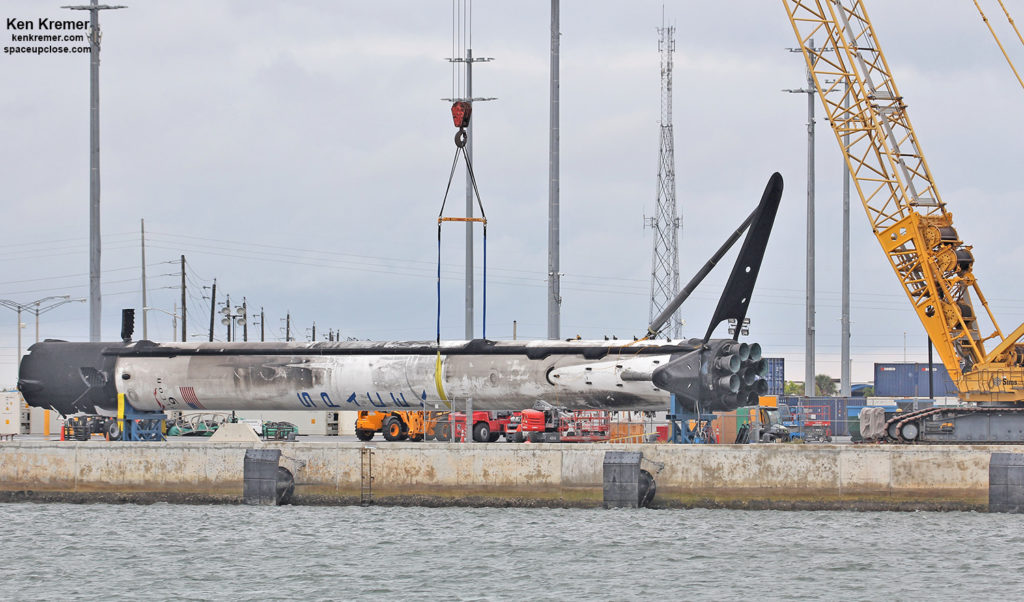 |
|
Two legged SpaceX
Falcon 9 in Port Canaveral on 9 Dec. 2018 after rear facing leg detached. Credit: Ken Kremer/kenkremer.com/spaceupclose.com |
 |
|
Two legged SpaceX
Falcon 9 in Port Canaveral on 9 Dec. 2018 after rear facing leg detached. Credit: Ken Kremer/kenkremer.com/spaceupclose.com |




